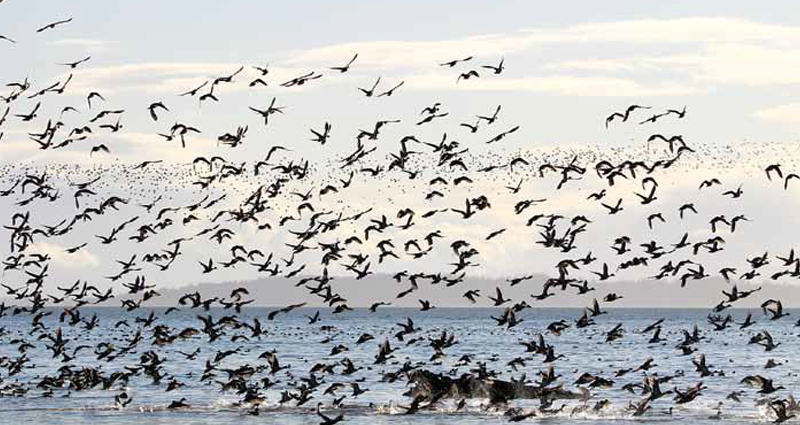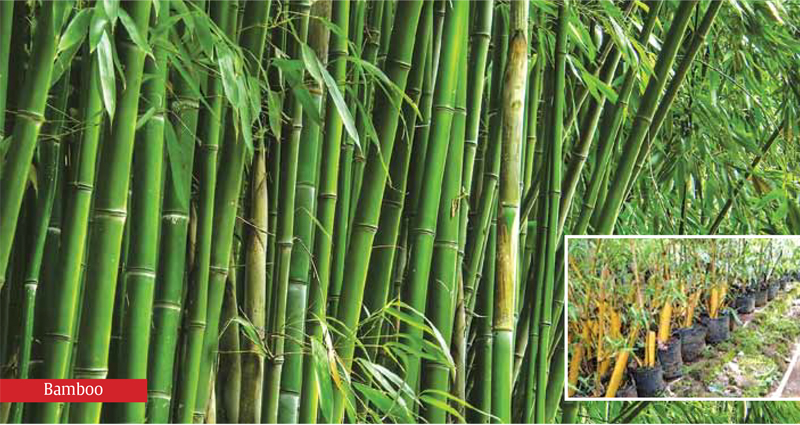
Text & Photographs By T. L. John
The Sanctuary of Winged Visitors – Koonthankulam Bird Sanctuary
Of bird sanctuaries in the southern part of India, Koonthakulam is a lesser known place situated in the Tirunelveli district of Tamil Nadu. Many winter migratory birds, some hailing from the cold latitude of the northern hemisphere and some from other parts of India, arrive here annually for breeding and other roosting purposes. This sanctuary is situated in the midst of Koonthakulam village which is 40 km away from Tirunelvelli town. The villagers always welcome the seasonal winged visitors with cheer and love. They have a notion that the birds bring them fortune and good harvest and so they protect these birds from all sorts of threats from predators like crows, kites, snakes and cats. The presence of these winged visitors make the atmosphere of the village noisy and their droppings cause damage to clothes and make the roof tops dirty. Apart from this, the foul smell of excreta affects the appetite for food of the villagers. Still they bear all these because they know that the excreta of birds are enriched with phosphate and nitrate which serves as an excellent manure. One has to appreciate the sincere affection and consideration of the people towards these winged visitors and nowhere in India can we see people and birds living in such harmony. Once, this place was prosperous with agriculture and seasonal rainfall. For unknown reasons, now it receives only sporadic rainfall and the inhabitants of the village depend upon groundwater for drinking. For agriculture, they depend on irrigation- water flowing from Manimuthar Dam located
50 km away. The main sanctuary pond of Koothakulam and other ponds in and around get filled with this water which carries fish, fish larvae and other aquatic animals. The adults among them breed leading to an exponential increase in their population. The congenial situation prevailing there attracts the birds from the adjoining places. Subsequently they start migrating in clusters, which culminate in breeding, building nests and laying of eggs. Soon the sanctuary pond becomes enriched with the droppings of the birds. The enormous quantities of excreta thus deposited in pond water, are channelled by the villagers towards fields for the cultivation of crops.
The migratory birds start coming here by December every year and they stay there until July next year after completing their course of breeding. Among the migrants, the most spotted bird species are Painted stork, Grey pelican, Spotted billed pelican, Openbill stork, Spoonbills, White ibis, Black ibis, Glossy ibis, Cormorant, Indian shak, Darter and Egret of all kinds. The other waterfowls
like Bar-headed goose, Common teal, Spot bill duck, Gargany teal, Cotton teal and Coots are also spotted. However, they are comparatively less in number. Also Black winged kite, Brahminy kite, Black winged stilt, Great stone plover, Stone curlew, Redwattled lapwing, Yellow watteled lapwing, Little ringed plover, and Pied kingfisher, White breasted kingfisher, Small blue kingfisher and Herons can also be seen around the sanctuary in good numbers. Occasionally, Flamingos are also seen here in small groups. A cluster of flamingos landed here and stayed for a period of two months in 2009. It was an amazing and rare privilege concerning this sanctuary since it was developed as a bird sanctuary in 1994. By now, the sanctuary has become one of the best in South
India by the intervention and protection of the forest department. They have planted thousands of trees in and outside of sanctuary to pave way for migrating birds for breeding. In this context, special mention has to be made about a person – Mr. Balpandian – who is a keen observer and bird watcher. He often serves as a guide to visitors, who is very keen about taking extra care of fallen birds and their siblings. Once they recover from their illness and injuries, they are set free to join their groups. However, occasionally, it was observed that some birds even hesitate to leave Balpandian even after they are set free. This is really a heartening scene to watch. Balpandian received many prizes and awards for his sincere services rendered for the conservation of the birds of Koonthakulam. In 2005, he received the Nature Conservation Award and cash prize from the U.S. Fish and Wildlife Service for his commitment as self-appointed guardian of the water-birds of Koonthakulam. He also has received many awards from NGOs and other nature clubs.
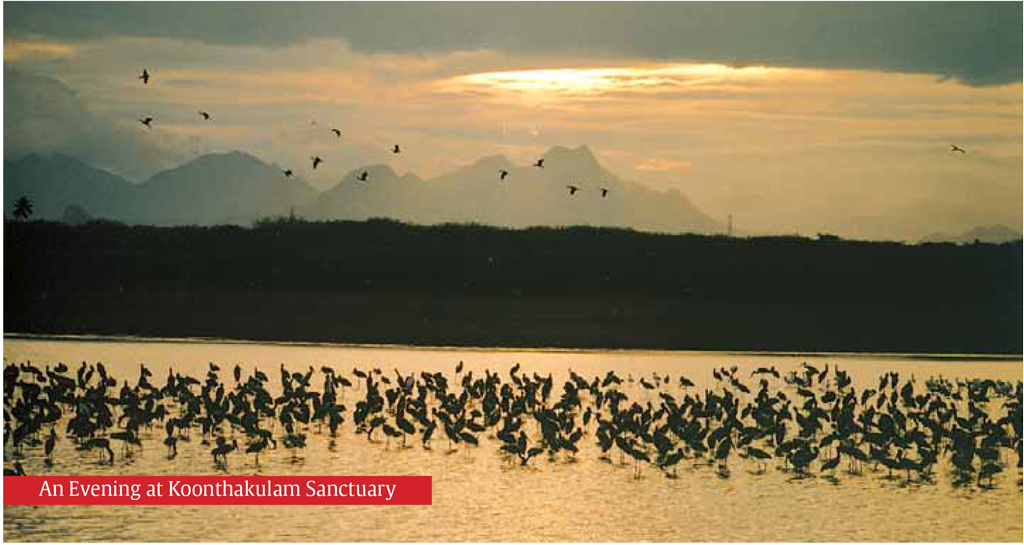
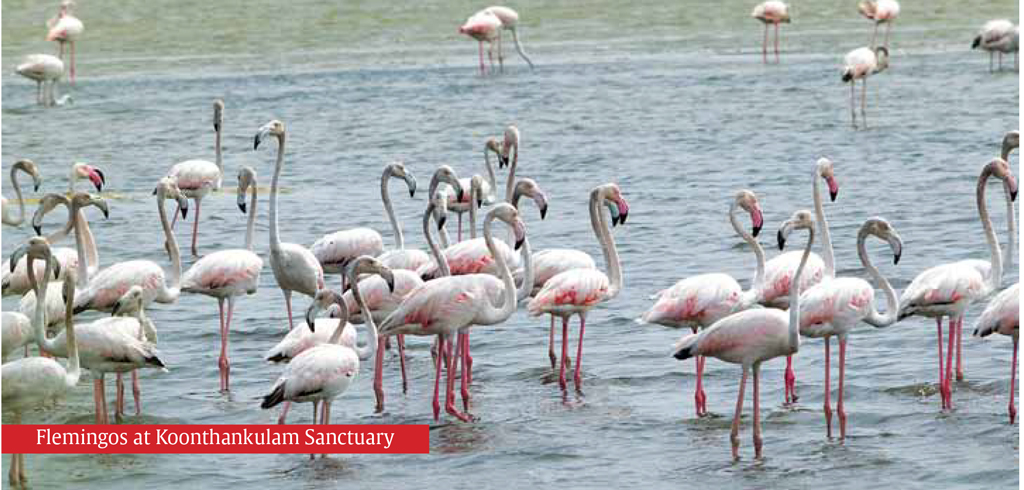
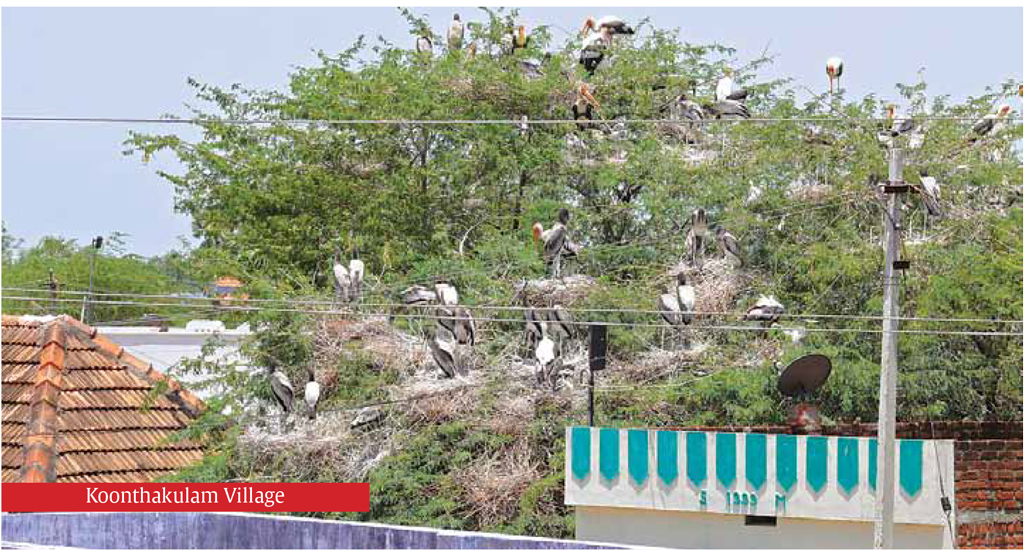

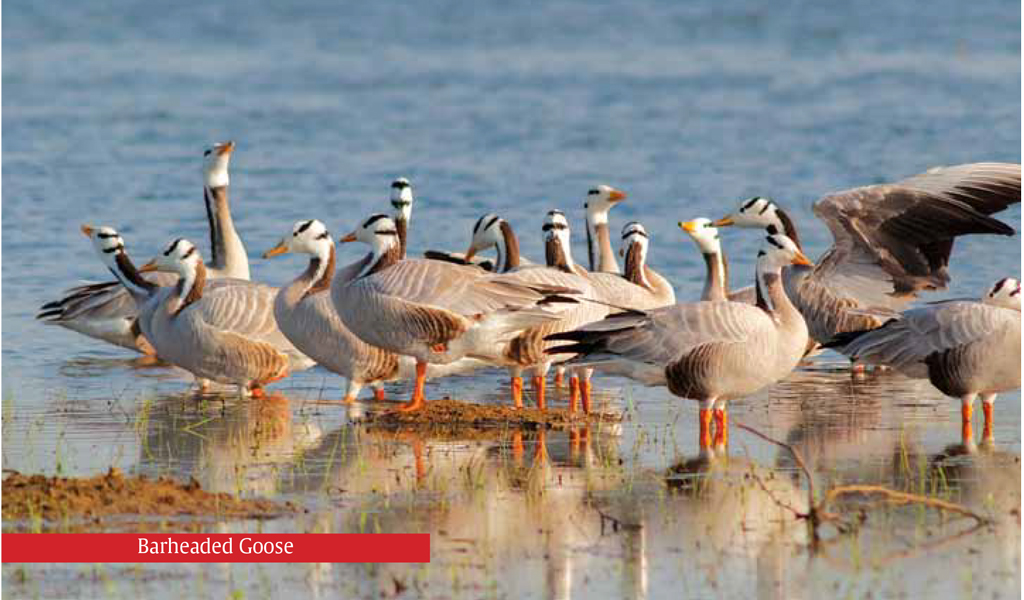
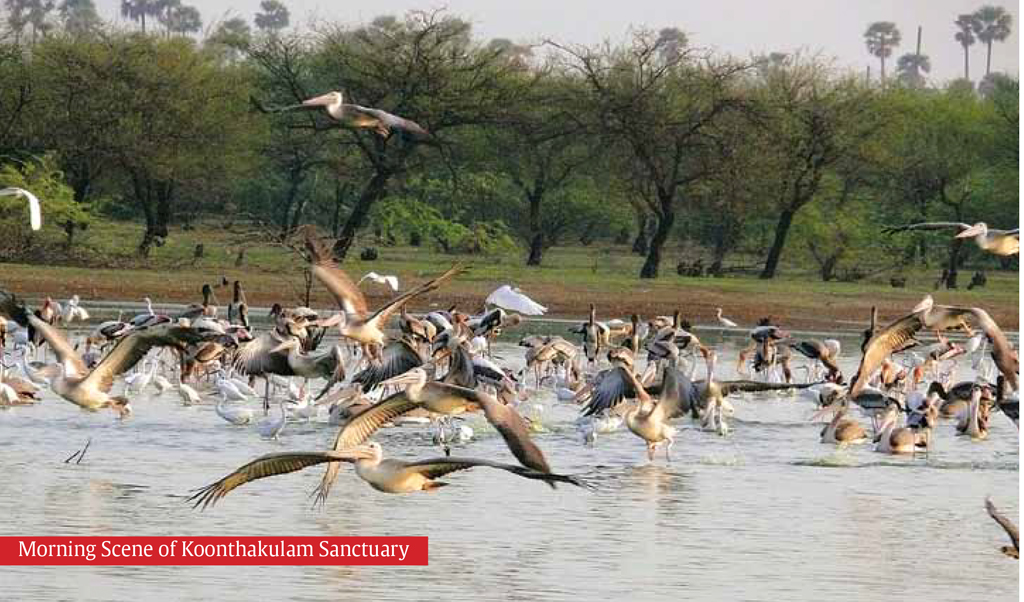
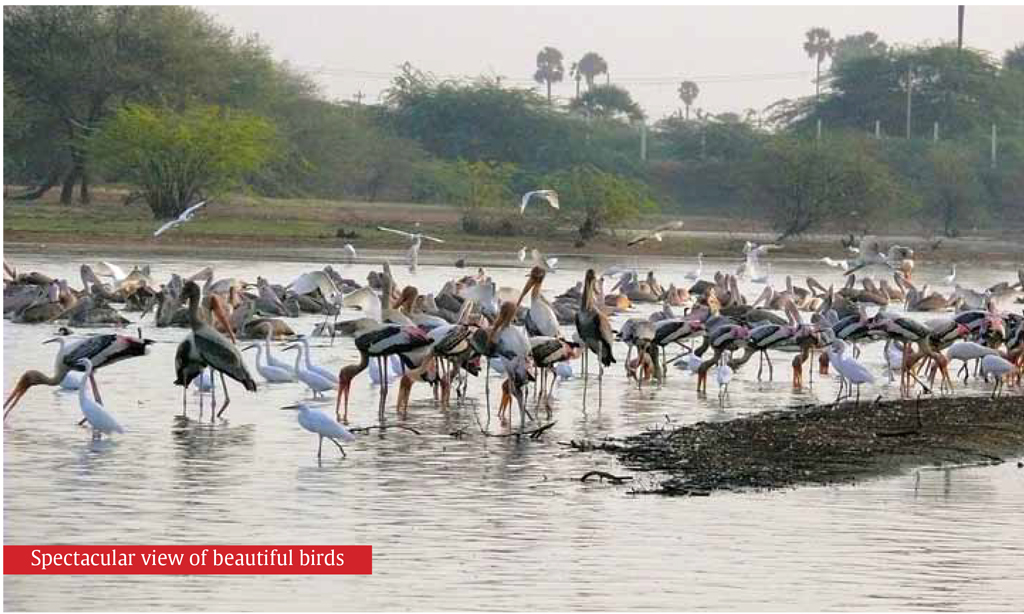
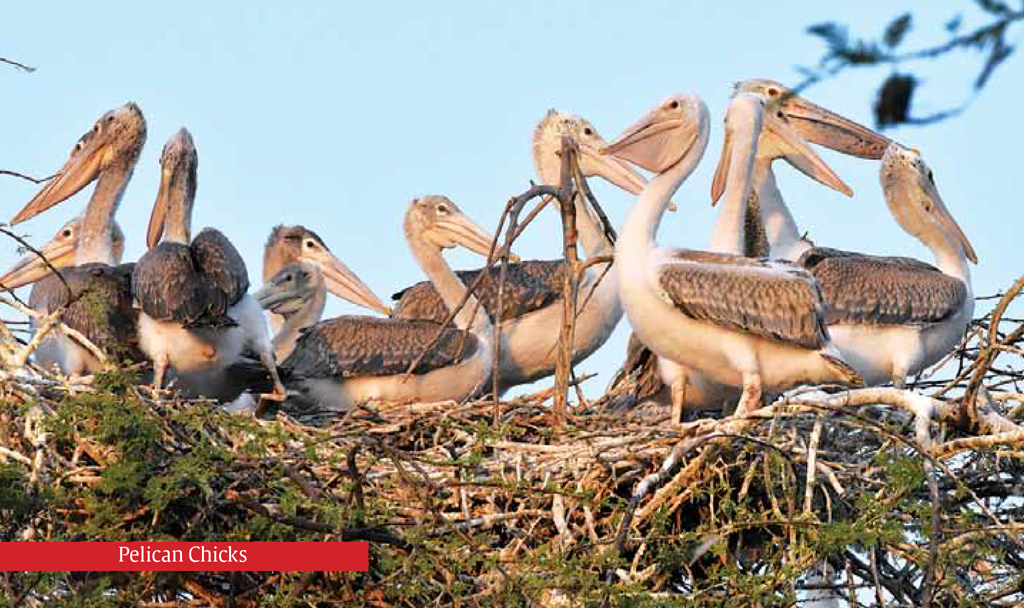
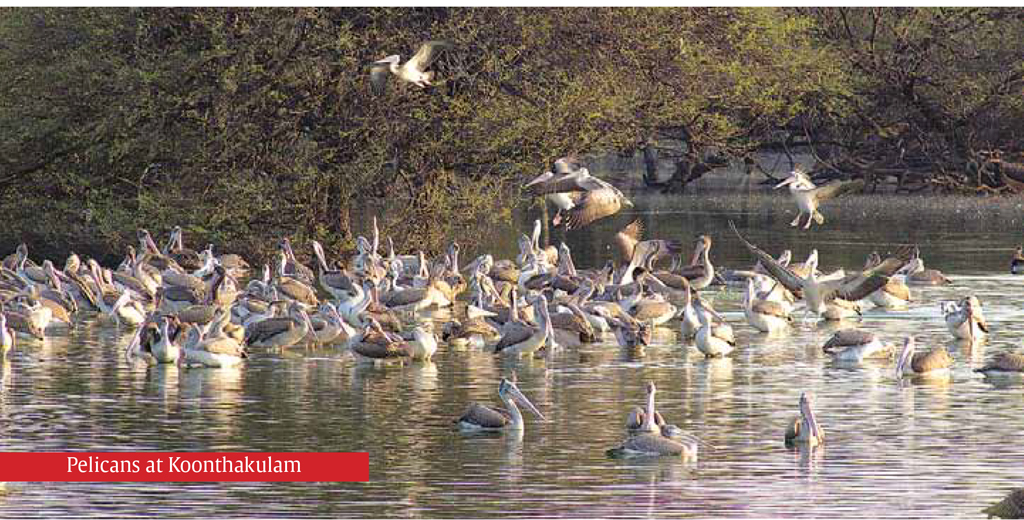
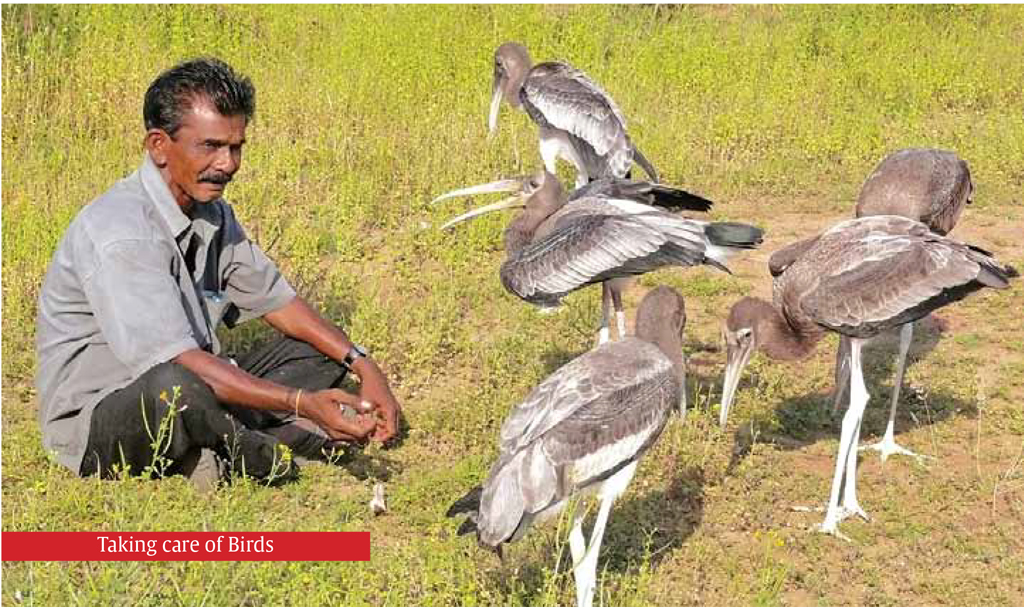
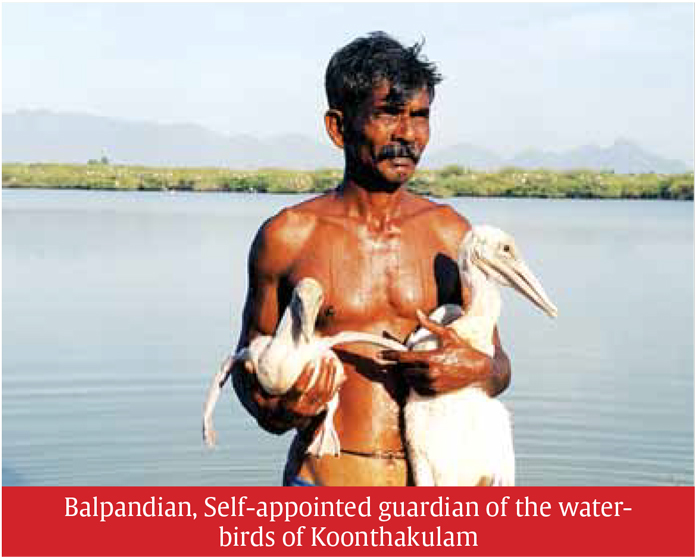
During the winter season, the mornings begin with sweet calls of birds and the flapping sound of their wings. When the morning sunlight begins to glow in the east, the sanctuary pond fills with pelicans. On the shore of the pond, storks dive into the water for catching fishes. This spectacular view can be seen only in the morning for just an hour and afterwards the birds
will fly off to other destinations in search of food. The sight of hundreds of pelicans moving in such a cluster in the sanctuary pond water creates a marvellous view. The technique they use for catching fish by making a round fence by themselves is undoubtedly wonderful. While the sun rises up in the sky, the temperature of the atmosphere increases drastically. This causes discomfort to the chicks in the nests on tree tops. In order to avoid this hazard the parent birds provide them shade by stretching out their wings.
The evening atmosphere of the sanctuary differs from that of the morning and is much more fascinating and colorful. Countless numbers of flying birds moving towards the top of trees can be viewed in the sky opposite to the setting sun. This gives great charm and impact to the scenic beauty. In addition to this, the reflection created by the painted storks and the tiny and feeble waves on the water surface formed by the soothing wind add more enchantment and clarity to the scene. The combination of all these creates a marvellous and wonderful scene of beauty and a feeling of emotion that cannot be explained through words. Soon after the nightfall, the atmosphere returns to absolute silence leading to the activity of owls and bats. The wonderful experience of Koonthakulam will never fade from our memory, and of course it will urge us to visit the sanctuary again and again. The availability of adequate food, occurrence of host trees and the hospitality of villagers have made this sanctuary a paradise to migratory birds


